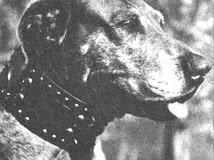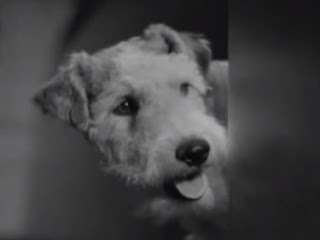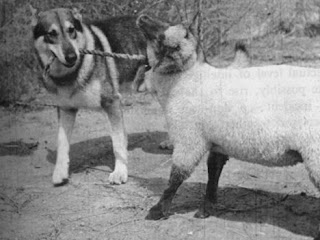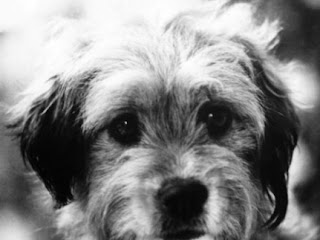When the popular comic strip Blondie started its long-running film series (1938-1950), Spooks played the part of the family dog Daisy.
 |
| Penny Singleton (Blondie), Spooks (Daisy) and Arthur Lake (Dagwood) |
Spooks, a male cocker spaniel/poodle/terrier mix, was born around 1937 and belonged to Rennie Renfro. Renfro, an animal trainer, rescued the dog from an LA animal shelter and gave him the name Spooks because of his timidness. With the help of Rudd Weatherwax, the famous dog trainer who trained Lassie, the nervous dog went on to appear in over 50 films - Blondie being the most well-known. Spooks had a great personality and was able to express a number of emotions ranging from excitement to fear.
Spook did 27 of the 28 Blondie films, and became known as Daisy to Renfro and the world. In the episode Blondie's Blessed Event (1942), Daisy gives birth to five puppies. Daisy fathered many puppies, but none of the dogs portraying the puppies were claimed to be of relation to him. Other films Daisy appeared in include National Velvet (1944), Follow the Boys (1944), Hollywood & Vine (1945) and The Red Stallion (1947).
Daisy (Spooks) passed away in 1955 at about the age of 17, and his body was cremated.



















